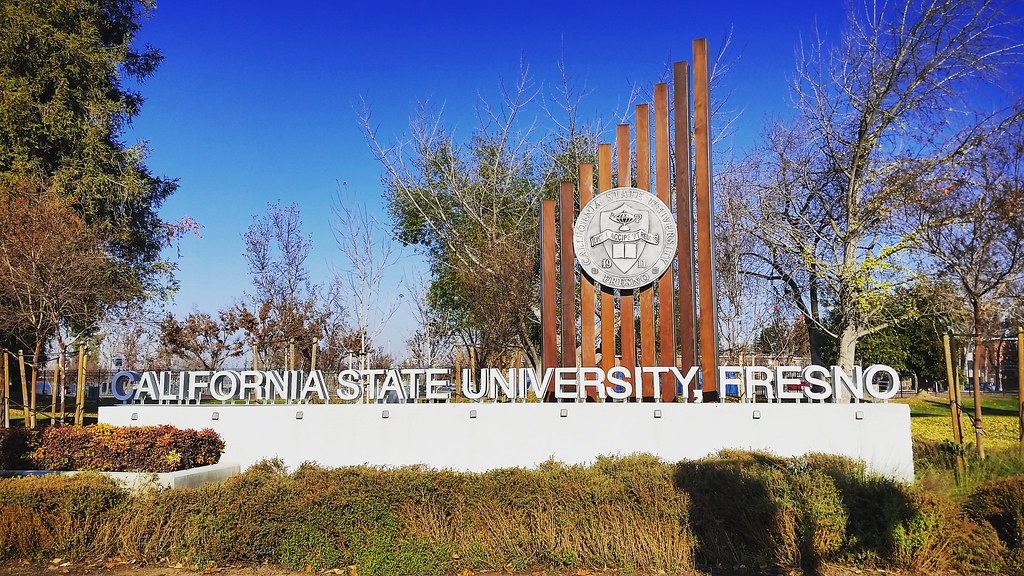American colleges tap into energy P3
It takes two to tango and more often than not – when it comes to public private partnerships in the US – the public side has two left feet, according to IJGlobal reporter Elliot Hayes…
Infrastructure in the US – which has annually been touted by the ill-informed as being on the verge of taking off for longer than anyone cares to recall – has one burgeoning P3 sector that is building towards an impressive crescendo.
- A version of this story first appeared in IJGlobal Magazine Autumn 2020
The better informed always reply with the cliché that the US is not one homogenous market but a group of 50 individual markets... and so the discussion follows the same path of a million conference panels.
This turbulent year, rocked by a global pandemic, has seen confidence in US infrastructure rocked across more traditional sectors with coronavirus blamed for delays to deal progress as well as public-side funding issues.
For example, the sponsors behind New York’s JFK Airport are concerned it will not be able to obtain public funds for the deal unless the federal government bails out the Metropolitan Transportation Authority. Then in Maryland, the transportation department has been blamed for cost overruns and delays to the delivery of the Purple Line as the private consortium threatens to walk away. Over in Hawaii, the Honolulu Authority for Rapid Transportation has delayed the award of its $9.2 billion transit project for a sixth time due to the Federal Transit Authority refusing to release funds until it is convinced the P3 will work.
It is in this environment that projects being led by educational establishments – with no real ties to the state’s administration – are all the more appealing.
There have been 2 P3-style projects brought to financial close in the US since 2017, bringing in the private sector to replace ageing heating and cooling infrastructure and then operate them over the course of a concession, greatly enhancing the university’s green credentials which is increasingly important to learning establishments’ reputations.
IJGlobal has been tracking the evolution of this sector since its early days and now – having established the foundation of 2 closed deals – it is maturing nicely and providing a pipeline of projects with 5 in planning and the potential for many hundreds more.
Engie has firmly established itself in this space, and market rumour has it that the French infra specialist is in discussions to build a team to focus solely on university P3 projects. It is already playing a central role on the 2 consortia that have both taken transactions to financial close – Ohio State University and the University of Iowa (pictured).
“I think Ohio State was a pioneer, and the University of Iowa is the second of its size,” says Andre Cangucu, chief business development officer at Engie North America.
Ritu Kalra, head of the western region and for higher education in Goldman Sachs' public sector and infrastructure finance division, adds: "A lot of universities are asking themselves, 'Why are we in the business of owning and running our own power plants? That's not our bread and butter'."
And this dawning realisation within the realms of the US further education world is helping these projects gain a foothold as the “no-brainer element” of these deals (as one industry observer calls it) wins over hearts and minds. They are alert to the attraction of spinning off non-core assets, replacing outmoded, inefficient and dirty infrastructure.
Utility P3s "will proliferate" during the next few years as colleges work swiftly to replace utility infrastructure, according to a report from Moody's Investors Service. In a separate report, S&P Global Analysts noted that institutions have started using P3s for energy projects too.
Risk transfer is a key reason that colleges are opting for energy P3s "and that’s something you have to get right," Goldman Sachs' Kalra says.
So far, so good
The private sector – having been through the mill for years chasing willow-the-wisp deals being driven by a slew of transport departments – take solace from working with universities where there is no lack of capital to pay leases and an abundance commitment.
The ease with which the $1.165 billion Ohio State University (OSU) was closed in late 2017 by Engie and Axium Infrastructure serves as a pathfinder for similar deals. It involves the lease-based outsourcing of an on-campus energy asset and was an alarmingly straight-forward deal.
“The facility generates electricity with combustion turbines and then utilizes the exhaust heat to make steam and heat water, which Ohio State uses to heat campus buildings,” said Serdar Tufekci, chief executive of the SPV.
“The CHP facility also includes a central chiller plant, which will be the first one west of the Olentangy River to provide cooling in the Midwest campus and West Campus buildings. This combined capacity is both financially and environmentally responsible.”
Back in 2017, Zach Horn – Engie employee and former OSU student – said: “I really do think that’s kind of where energy infrastructure is going to go within the next 20 years. People are definitely going to want to move away from the central power plant and make [sustainability] their own thing. I think Ohio State was ahead of the curve on that.”
However, it took until 2019 for an almost identical repeat of the transaction to come to market and make it to make it over the line earlier this year (March 2020). This time, Engie partnered with Meridiam to reach financial close on a P3 transaction with the University of Iowa with its $1.319 billion utility system.
“This agreement is an excellent step forward for the University of Iowa,” says board of regents president Dr Michael Richards. “We must continue to be creative in leveraging our assets to find ways to provide the funding that Iowa’s public universities need to be their best.”
On Ohio, Engie and Axium financed its $1.165 billion P3 with a $850 million long-term private placement facility backed by around 8 institutional investors, a $140 million credit facility comprised of a $125 million revolving capex loan with a five year tenor and $15 million letter of credit from RBC Capital Markets, MUFG, CIBC and Santander. The equity amounted to $175 million and was split 50:50 between the 2 SPV members.
“Engie is excited to help lead the University of Iowa in its zero-carbon transition and towards a more sustainable energy future,” says Houston-based Gwenaelle Avice-Huet, chief executive of Engie North America.
As to the 2020 Iowa concession, financing was straight forward. The $1.319 billion project was financed with $423 million in equity and $869.51 million in debt on a 68:32 gearing.
The debt breakdown was split between a commercial bond for $614.74 million and a capex loan of $271 million, and $10 million in working capital. The capex loan and the working capital was provided by KeyBank, KfW-IPEX Bank and Santander.
A week from financial close on the University of Iowa (UI) project, it was announced that Hannon Armstrong had made a $115 million cash investment to join Engie and Meridiam on the project.
“The UI is pleased to partner with Engie and Meridiam over the next 50 years in order to deliver on its strategic plan, which is focused on the success of students; research and discovery; diversity, equity, and inclusion; and engagement,” says UI president Bruce Harreld.
“With Engie and Meridiam, the university has found partners that share our values of investing in our people, improving sustainability, and transitioning toward a zero-carbon footprint.”
Cookie cutter contractual agreements
Both deals were done under 50-year concessions. The Ohio deal featured a $1.015 billion upfront payment to the university while the Iowa deal had a $1.165 billion upfront payment.
Ohio State is paying the Engie-Axium consortium an annual fee that includes a fixed fee that starts at $45 million and grows 1.5% a year and an operating fee to cover costs (starting at $9.2 million based on a three-year average of university costs).
Iowa will pay its concessionaire a fee of $35 million from years 1-5, increasing the fee by 1.5% each year after that.
Engie will be operating, redeveloping and maintaining both assets once complete.
Looking Ahead
Since the financial close for Iowa University a further 5 deals have been announced.
In June (2020), Iowa State University revealed it was seeking to redevelop its coal-fired utility system via a P3, having closely observed the Engie-Meridiam deal with University of Iowa.
The University of of Idaho has been busy preparing to issue procurement documents for redeveloping some its campus utility assets via DBFOM P3 contracts. The university will first run a procurement for its district energy plant, with the tender due to be released before the end of this year (2020).
California State University at Fresno (pictured) is set to release an RFP for the Central Utility Plant Replacement Project. The university already has 4 teams shortlisted:
- Bulldog Energy Alliance – Engie and Ullico
- Bulldog Infrastructure Group – Meridiam, Noresco, United Technologies, GHLHN Architects & Engineers
- Plenary Utilities Fresno – Plenary, Webcor Construction, Johnson Controls and Syska Hennesy
- Victor E Energy Partners – Fengate Capital Management, Veolia Energy Operating Services, WM Lyles Co, Kennedy/Jenks Consultants and Taylor Engineering
The University of Maryland, College Park issued an RFQ in April (2020) to build, operate, maintain and – possibly – finance of its NextGen Energy Program. The deadline to qualify was 29 July and shortlisted bidders are expected in Q4.
In March (2020), The University of Washington (UW) issued an RFI for the renewal of its campus energy systems. The deadline to submit to qualify was 17 April.
Louisiana State University is currently mulling whether it should proceed to issue an RFQ to redevelop its ageing power plant. The RFQ had been due for launch in September (2020) but university officials have yet to agree on a procurement model.
With 5 projects in the pipeline to follow 2 cookie cutter pathfinders and many hundreds of educational establishments around the US being heated and cooled by ancient systems, these projects looks set to be the only infrastructure sector that is coming of age in the 50 individual markets.
Request a Demo
Interested in IJGlobal? Request a demo to discuss a trial with a member of our team. Talk to the team to explore the value of our asset and transaction databases, our market-leading news, league tables and much more.



